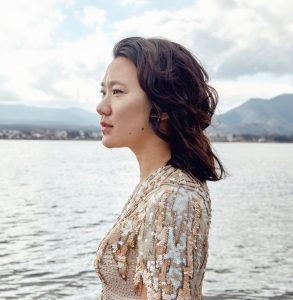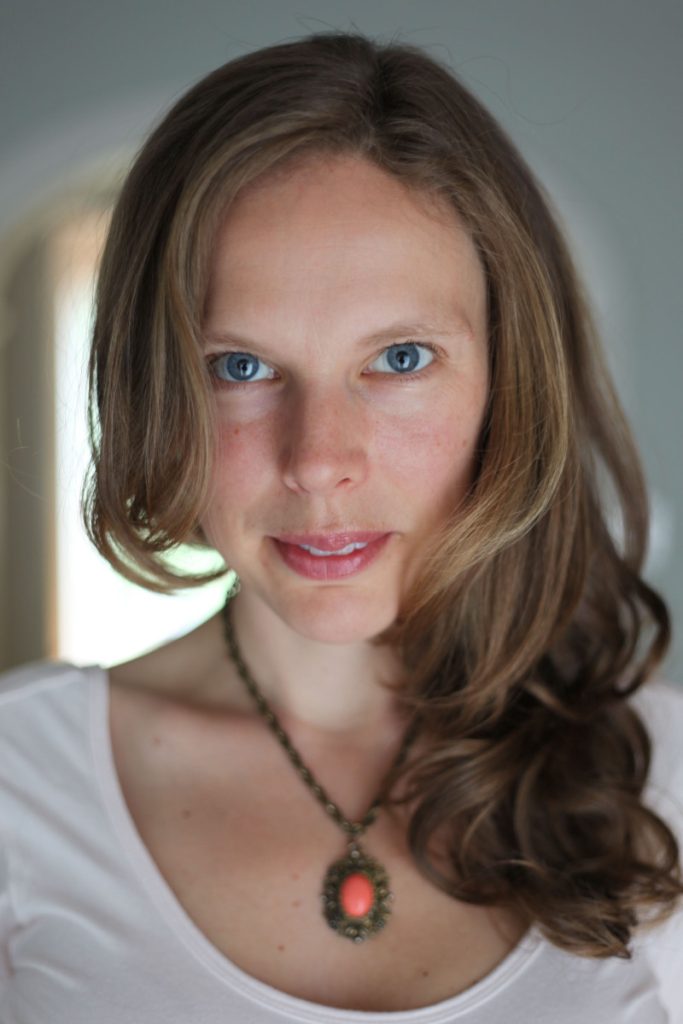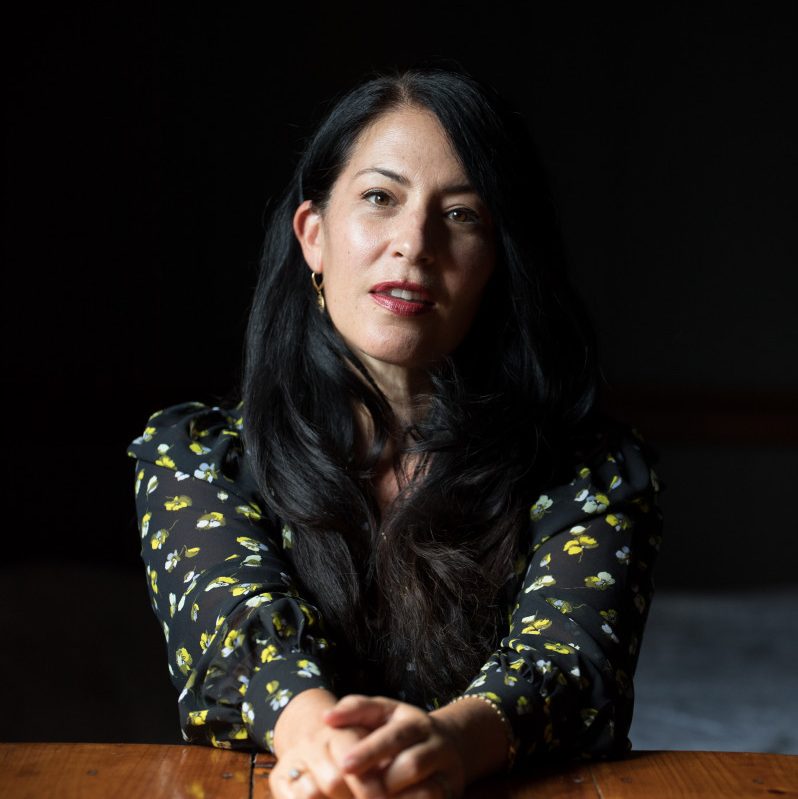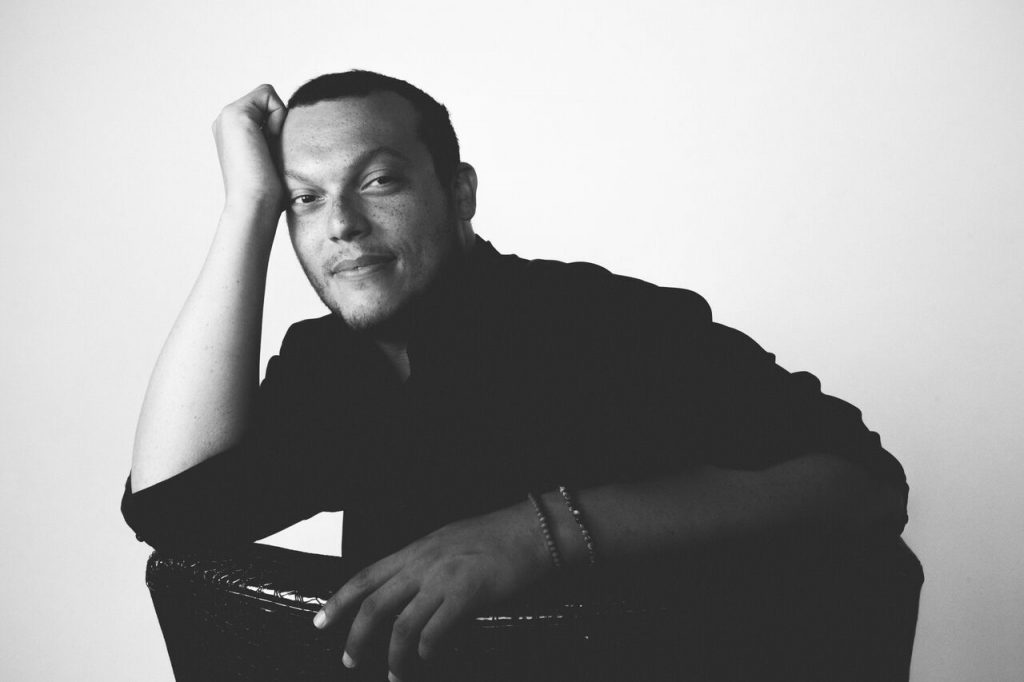
Photo by Apple Chua
Staff reader Sabrina Islam talks with poet and multimedia artist Diana Khoi Nguyen about grief time, sound, and her poems “Misinformation” and “Cape Disappointment” from NER 43.4.
Sabrina Islam: In “Misinformation” you write, “These myths shift imperceptibly each time we recall them. / Stored along the fault lines of memory / we pick up where we left off, unaware of what has changed.” Elsewhere, in your poem “Unless,” you ask, “Do you know that memory is all arrangement, representation of the world we already occupy?” In your poetics, how do you think about memory and mourning?
Diana Khoi Nguyen: Thank you for identifying this thread! Since discovering and digitizing my family’s home videos from the 80s and 90s, I’ve been trying to reconcile the video record (subjective perspective of my father behind the camera) with my memory (or mis-memory) and what actually occurred (impossible to “know”). I feel like I’m the three Fates working with one spool trying to make sense of time. Mourning, or grief time, further complicates it since my heart and brain are aching after specific person(s) lost—in my case, my brother, but also my grandfathers, grandmother, father-in-law, uncle, ex-boyfriend, former classmates from grade school, and so on. Grief is like a sensitive nerve spot on the skin’s surface—we don’t know to proceed with caution until we accidentally brush that spot—and even when that area isn’t actively in pain, we’ve mapped the region as a site of potential pain, which influences how we move through memories and historical / familial archives and documents. Poetry is that estuary space in which things will emerge, depart, pass through—some memories pop up unexpectedly, linger for indefinite periods of time. And it’s my job to somehow allow for the truest emotional experience to be captured in this space—I’m somehow trying to observe without interfering but know this is an impossible task so I try to acknowledge my presence in seeing, remembering, misremembering, recalling, forgetting. I’m interested in where I stumble.
SI: You’ve written about sound previously, where you consider how sound itself can be a form of violence, “a victim bears no marks on his body, the body moved by sound, moved to leave it leaves no trace.” Again, in “Misinformation” we hear the humming of bees inside the walls. Is sound a subject in your poetry?
DKN: Absolutely! It’s likely an outright obsession, honestly. Ours is such a visual dominant culture, but it’s really the sonic landscape where so many cues are left unanswered, unobserved. I can’t stop thinking about how we can shut our eyes to sleep, but it’s nearly impossible to turn our ears off (if we are fully able, that is). As a new mother, I’m surprised by how primal my ears are functioning when I sleep at night: I can hear even the slightest sigh or whimper from the baby while I’m dead asleep! Because somehow I’ve calibrated my brain to be open to that sonic channel in the world. In my work, I’m also thinking about how I missed so much by not pausing to listen more to my environment, especially to my familial spaces. So much goes unsaid in what is missing, in what is quiet, or when someone or something is silenced. I’m still trying to figure out how to ethically and tenderly listen, and what to do about that sensitive material I encounter—often it’s difficult subject matter: traumatic memories from the past bobbing in the sonic surf.
SI: In her review of your debut collection Ghost Of, Jess Smith notes how readers are reminded that “a country’s history and a family’s history and an individual’s history are intricately and inextricably bound.” In your new poem “Cape Disappointment” you write, “what is breached may heal if we can survive the violence // estranged from a mother tongue I mistake hard to say for nostalgia.” How has your understanding of multigenerational trauma evolved in your thinking?
DKN: Those studies which suggest how multigenerational trauma gets passed between generations as changes in our bodily health feel intuitively right and also downright terrifying. That combined with the notion from The Body Keeps the Score (which suggests that trauma also is embedded in our physical bodies) reminds me that nothing disappears once we “survive” it. Time moves indifferently, but our physical and emotional being are altered by having survived. Like how sounds don’t simply dissipate, but seemingly disappear from aural detection simply because our bodies and other structures (walls, objects) have absorbed the sound waves. With all these events and histories captured in our bodies, I both marvel at how strong humans can be, but also how damaged, weathered, in need of gentle care. We can be strong and also deserving of tenderness from all sources. As a person who engages in the literary arts, I’m keen on tuning to what words emerge on the page, in my mouth, in how I do or don’t describe what it is I’m doing and seeing in my process. That what gets unuttered or fumbled is also noteworthy residue of trauma, memory, and history.
SI: In Ghost Of you invent a form, “Gyotaku,” inspired by the Japanese tradition of printmaking from fish. In my reading, I found your gyotaku poems emphatic, vulnerable, and deeply aware. Is the gyotaku form meant to create connections with memory and remembrance?
DKN: Oh thank you for spending time with the gyotaku poems—it’s funny: as I was typing “gyotaku,” autocorrect changed the word to “ghostly”! Honestly the gyotaku were meant to capture and play with the image-text poem as a body—that the poem as a deceased body could leave behind fainter and fainter marks on the canvas, page—gyotaku is many things, but I’m fixated on how it’s essentially the dead body as a stamp, one used for the living to remember the impression of the thing which once also used to be living. In this way, it is a memorial for the dead.
SI: In your essay “The Imperative,” you remind us how Ezra Pound said one must make it [poetry] new. How do you approach form in poetry?
DKN: In my work, I want form to somehow be essential to the things being uttered—there is a rooted relationship to content, and not merely for form’s sake. My undergraduate mentor, Cal Bedient, once said to me over deep-fried soft-shelled crab sandwiches that the universe is constantly making new matter, and that he was interested in poems and poets who tried, in what is likely a vain pursuit, to emulate the universe’s ability to produce new things. I’m constantly trying to listen to the visual artifacts in my life, my family, and materials I encounter—how might they lend their forms to my thinking and noodling? Maybe similar to a hermit crab’s process of determining a new home, or as I like to call it, collaborating with my objects and materials.
SI: You’ve said you consider poetry your religion and that each poem you write becomes a mission in witnessing, feeling, and remembering. Could you speak more about the space poetry occupies in your life?
DKN: Wow, I vaguely remember saying this statement which I think was nearly a decade ago now! How serious I must’ve been back then. I’m not a religious person, and poetry is certainly not my religion, or a religion. But, I do consider poetics to be a way of moving and being in the world—of generosity and listening to the convergences, tensions, harmonies, and discordances.
SI: Which poets and writers have shaped your understanding of language and poetry?
DKN: Too many to comprehensively list here, but will share a smattering in no particular order: Susan Howe, Jenny Erpenbeck, Yoko Tawada, Clarice Lispector, Brian Dillon, Layli Long Soldier, Mei-mei Berssenbrugge, Arthur Sze, Carl Phillips, Lucie Brock-Broido, Myung Mi Kim, Sun Yung Shin, Douglas Kearney, Tyehimba Jess, Victoria Chang, Don Mee Choi, Alex Ross. A mixed bag of genres and fields.
SI: Your second collection of poems will be published next year. What ideas are you exploring now?
DKN: The second collection picks up threads from Ghost Of and is working through the topics and themes you’ve brought into this dialogue here: memory, history, sound, multigenerational trauma—and continues to ruminate on the possibility of forms in poetry.
As for right now, I’m exploring these things but chiefly in a prose project that I won’t call fiction or nonfiction! Which is to say: I keep returning to the same ideas, but exploring them with different instruments and tools.
SI: Thank you so much for your time, Diana.
Sabrina Islam, who reads fiction manuscripts for NER, holds an MFA in creative writing from University of Maryland, where she teaches college writing and creative writing. She has received scholarships from the Kentucky Women Writers Conference and the Key West Literary Seminar. Her stories can be found in Flock, Acta Victoriana, Prairie Schooner, and the minnesota review. She currently lives in Washington, DC.



